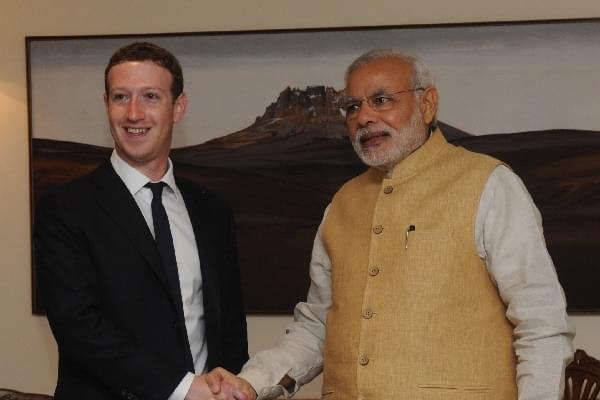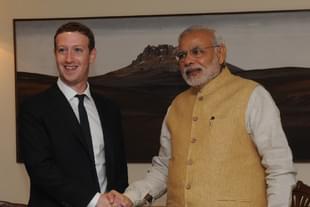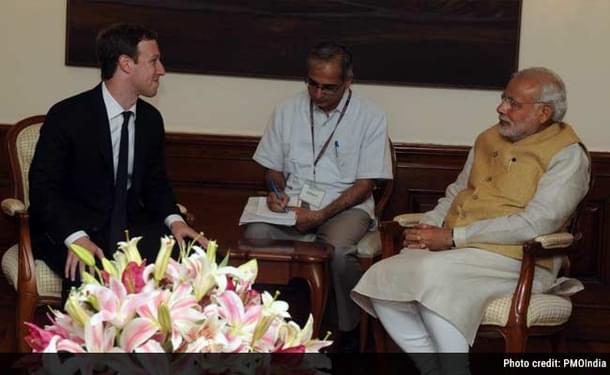Politics
Modi Visit - Seven Things We Can Learn From Silicon Valley
Banuchandar Nagarajan
Sep 07, 2015, 05:07 PM | Updated Feb 11, 2016, 09:18 AM IST
Save & read from anywhere!
Bookmark stories for easy access on any device or the Swarajya app.


The PM – during his visit to the US – should brush aside the petitioners’ “letter of concern” and instead focus on his reform agenda. He should look to capitalize on the immense knowledge and experience of California in technology and innovation
In 1910, US President Theodore Roosevelt made his famous “Man in the Arena” speech. Literally and figuratively, the “Man in the Arena”, Prime Minister Narendra Modi has been lighting up the scene all over the world much to dismay of “classroom socialists” who are paranoid about the “space of civic engagement” but, funnily enough, are unwilling to accept the mandate of the largest democracy. Considering Prime Minister Modi’s planned public appearance at the SAP Center at San Jose later this month and the recent “letter of caution” from “Amartya’s Army”, it will be worthwhile to go back to the “Man in the Arena” speech:
“It is not the critic who counts; not the man who points out how the strong man stumbles, or where the doer of deeds could have done them better. The credit belongs to the man who is actually in the arena, whose face is marred by dust and sweat and blood; who strives valiantly; who errs, who comes short again and again, because there is no effort without error and shortcoming; but who does actually strive to do the deeds; who knows great enthusiasms, the great devotions; who spends himself in a worthy cause; who at the best knows in the end the triumph of high achievement, and who at the worst, if he fails, at least fails while daring greatly, so that his place shall never be with those cold and timid souls who neither know victory nor defeat.”
As his wont, the Prime Minister would not pay heed to the ridiculous and appalling petition and would instead focus doggedly on his agenda of highlighting the phenomenal success of the Indian diaspora in the Silicon Valley and working on partnerships to boost the economic growth back home in India. Sans the distractions of the G2G agenda that dominated his previous visit in September 2014, the Prime Minister now has the opportunity to focus exclusively on “Innovate in India” this time.
It goes without saying that “economic reforms 2.0” are critical to put India in a position where other countries and firms could partner fruitfully with India. The medium term projections of global financial flows point to a scenario where a structurally reforming India could grow rapidly thereby soaking up the excess capital supply due to slowing China. Also, the demographic dividend to be reaped and the moral imperative of skill development that comes with promoting innovation go without saying.

The following are some of the reform areas that the government could focus on in technology and innovation. In some areas the partnerships could go along with reforms and in some reforms must precede any worthwhile partnership.
First, in Agriculture, California is fighting drought successfully through frugal agricultural practices coupled with widespread use of technology. The water conservation methods and innovation in provision of farm inputs, in storage and distribution is something that the Indian government officials, farmers and scientists could learn from.
Second, Silicon Valley entrepreneurs, universities like Stanford and the famed Venture Capitalists, could be invited to participate in “lab to market” initiatives in India through a fund for commercialization of innovations made in universities. Creation of entrepreneurship labs and technology incubators in top research institutions in India could provide a platform for collaboration. Ideas for large-scaleadaptation of MOOCs (Massive Open Online Courses) in universities to enable our students to learn from the best educators from across the world should be discussed.
Third, to facilitate the development of “Internet of things”, partnerships could be forged for development of sensors, controllers, and other “Internet of Things” devices. Other than household devices these technologies would facilitate the rapid adoption of intelligent transportation and logistics systems and improve efficiency in ports, airports, tollways and electric grids.
Fourth, mobile payments through cell phones and “mobile banking” should be expanded and promoted in India. A clear understanding of the bottlenecks on implementing in India in spite of the pervasiveness of mobile phones has to be studied. Expertise with social enterprises in the Bay Area can be tapped for expanding financial inclusion through mobile banking, which can go a long way in empowering women.
Fifth, collaboration could be sought for creation of Medical Technology Parks to promote innovation in research and manufacturing of low cost healthcare devices such as medical instruments, diagnostics instruments, consumables, devices, etc. This initiative could be coupled with the new AIIMS institutions which are being planned. Use of technology in public health systems including telemedicine and National Epidemic tracking systems could also be explored.
Sixth, there is a need to promote big data and analytics by opening up government data sets (Open-government), those that are not sensitive, to application developers. This will spawn multiple applications in transportation, weather, public health, education etc. Startups on government big data could be encouraged through seed funding. The method of engagement between tech companies such as Palantir and the US government could be studied.
Seventh, California is the home of Hollywood and associated technical wizardry. Creation of “Media and Entertainment Parks” in partnership with the state governments and private enterprises, will promote employment in various aspects of media and related technologies. Animation, Gaming & VFX Industry offers tremendous scope of employment and innovation. The ongoing collaborations need to expanded manifold.
Any such facilitation in the flow of technology, ideas, services or investments in the above areas would bolster the credentials of the “Digital India” campaign. The detractors are probably afraid of this success.
After the thumping victory in May 2014, many American commentators compared Narendra Modi to Ronald Reagan, who was the Governor of California before he became President of the US. Like Modi’s “Acche Din” Reagan’s “Morning in America” campaign resonated with the aspirations of the public and he went on to cut the red tape and lay the foundation for exceptional growth. What the silly petition writers do not realize is that it is “Morning in India”. And they have not woken up yet!
Banuchandar is a political and public policy advisor. He posts at @Banu4Bharat.





